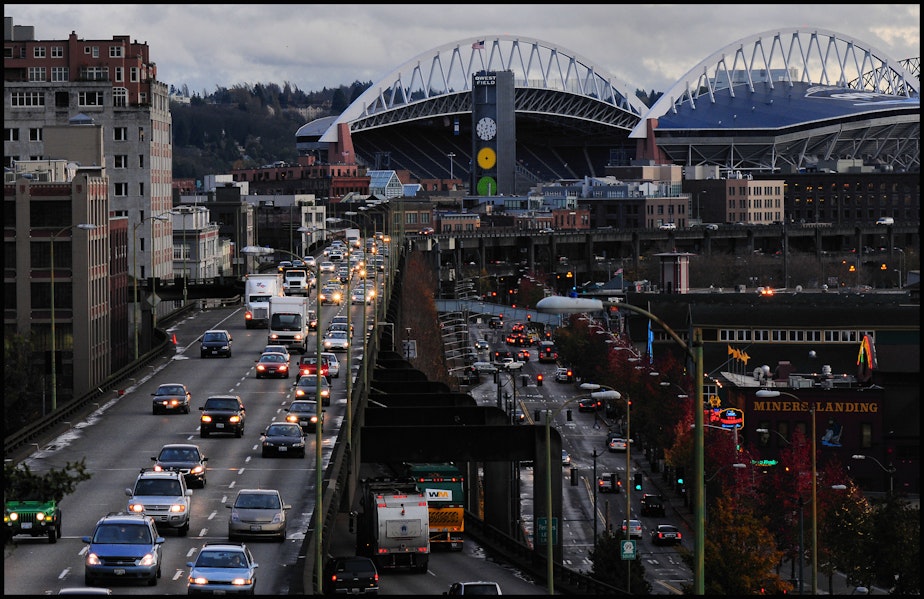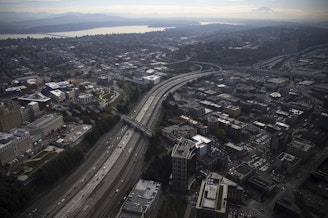We've been arguing about the viaduct since before it was even built

Kim Malcolm talks with Leonard Garfield about the history of the Alaskan Way Viaduct, and why it's been an ongoing source of controversy from the very start.
Garfield is executive director of Seattle's Museum of History and Industry.
Garfield said Seattle traffic was bad even in the 1920s and 1930s — long before the viaduct was built.
He said the view is beautiful now, but it wasn’t always that way. Downtown Seattle was heavily congested and dangerous.
“It’s where all the railroads came in, it’s where all the ships unloaded, it’s where all the horse-drawn wagons were bringing in cartons to be shipped and produce to be sold,” Garfield said.
Garfield said, even from the beginning, there was argument to tear down the viaduct. In fact, it started decades before the viaduct was even built.
Well-known Seattle architect Paul Thiry said it was an abomination. In general, architects didn’t like the plan but it excited city engineers.
They admitted it wouldn’t be a thing of beauty but what it would accomplish would be a thing of incredible utility. It would get people through town, above all the congestion and, Garfield said, “that’s what a modern city needs to be.”
“It had long been a dream to get a roadway that would fly through the city with as few interruptions as possible,” Garfield said.
It’s good to look back at the history of the viaduct, Garfield said.
“People forget what an exciting project it was when it first took shape. The notion that you could get from the south end of downtown to the north end in a matter of minutes was an incredible step forward. From almost the day it opened, tens of thousands of vehicles used the viaduct as a way to get through Seattle.”
“It predated I-5 by about 10 years and precipitated the advent of suburbanization."
So, Garfield reflects, “as we go to our homes, whether they’re at the far north or the far south, in some ways we can thank the viaduct because that was the road that got us home.”
The Alaskan Way Viaduct first opened to traffic on April 4, 1953. On January 11, the viaduct closed forever. The new Highway 99 tunnel will open in February.
Listen to the interview by clicking the play button above.





